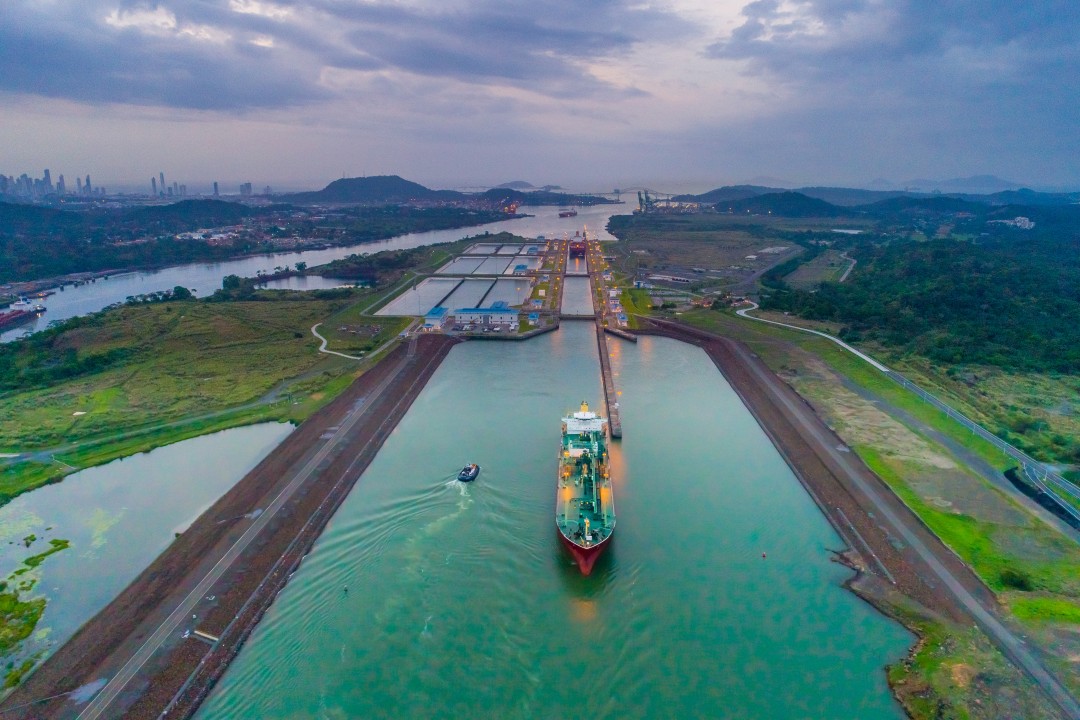From August 1 to November 30, 2020, the Panama Canal will encourage the protection of whales, dolphins, and other large aquatic animals as they begin their seasonal migration, crossing paths with vessels heading to the Canal.

In accordance with the International Maritime Organization’s (IMO) annual recommendations, ships traveling to and from the Canal via the Pacific and Atlantic Ocean during this period must stay within designated navigation areas known as Traffic Separation Schemes (TSS), which decrease the overlap between vessels entering or exiting the Canal and migrating whales. Vessels traveling through these areas on the Pacific side of the Canal should also proceed at a speed of no more than 10 knots, a practice known as Vessel Speed Reduction (VSR).
Effective every year during the seasonal migrating period, the TSS in the Gulf of Panama have considerably decreased the interaction between ships and migratory whales since the scheme was first put in place and then amplified by the Panama Canal in 2014, according to the Smithsonian Tropical Research Institute (STRI).
“We understand the magnitude of ships passing through the Canal and the need to co-exist with the wildlife in our waters,” said Administrator Ricaurte Vasquez. “The Canal has always prided itself as being a steward to the environment and as part of this commitment, we are always looking for ways to optimize our route, whether that means protecting marine life, reducing emissions, or both.”
A recent study commissioned by the Panama Canal found that the VSR program also fosters significant emissions reductions. The study analyzed speed, position and heading data from vessels’ automatic identification systems (AIS) between 2017 and 2019, and found that vessels lowered their greenhouse gas (GHG) and pollutant gas emissions by an average of 75% during the seasonal TSS measures, depending on the type, size, and fuel of the vessel. This amounts to over 15,000 tons of carbon dioxide (CO2).
The TSS program demonstrates how small changes in speed can have a disproportionate impact on protecting migrating cetaceans from collisions, in addition to reducing GHG emissions. Broader studies have shown, for example, that doubling the speed of a vessel from 10 to 20 knots not only raises the risk of vessel-whale collisions, but can also increase the vessel’s engine load, fuel use and emissions by approximately eight times, under special conditions.
“This is an industry-wide effort, and we cannot achieve any of our environmental goals, let alone reach the IMO’s emissions reductions targets, without a long-term partnership with our customers,” said Alexis Rodriguez, Environmental Specialist. “We take a sincere role in being the most efficient and environmentally conscious all-water route.”
The Canal is not alone in its efforts – TSS and VSR programs are used worldwide to reduce collision between ships and marine life. In 2002, the Bay of Fundy and the east coast of Canada also adopted the IMO regulation, to name a few.
From the 20-year-old restriction on the use of heavy maneuvering fuel and the discharge of any type of solid or liquid waste to its waters to the most recent industry-wide efforts to reduce GHG emissions per transport work by at least 40% by 2030, the Panama Canal remains committed to approaching environmental sustainability as a business imperative, providing the most efficient and safe routes for its customers.
Since opening in 1914, the Panama Canal has directly contributed to the reduction of 800 million tons of CO2 emissions. Its environmental initiatives have grown in recent years thanks in part to the Expanded Canal, which allows shippers to consolidate shipments on larger vessels, thus saving time, fuel and emissions.
Source: Panama Canal